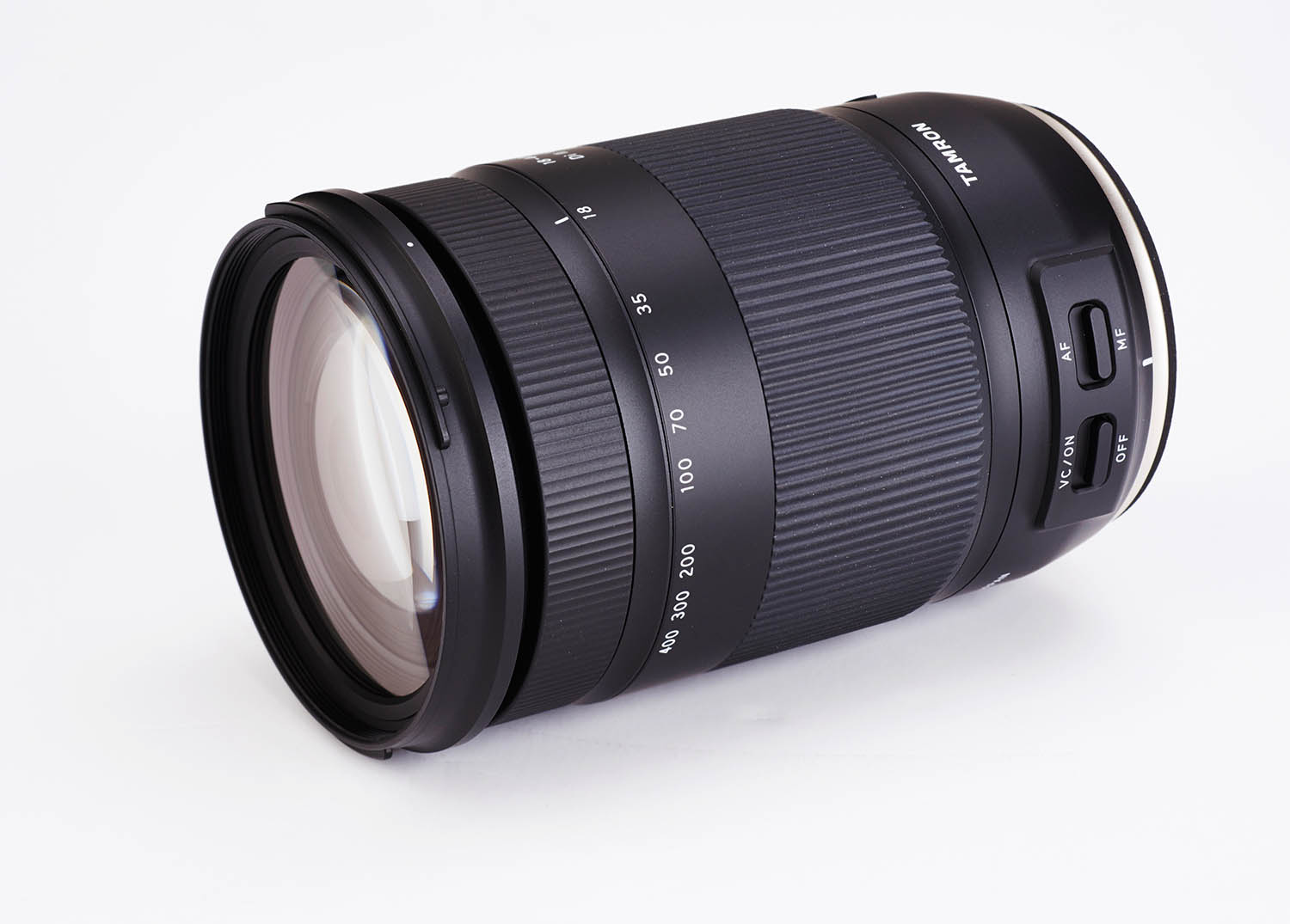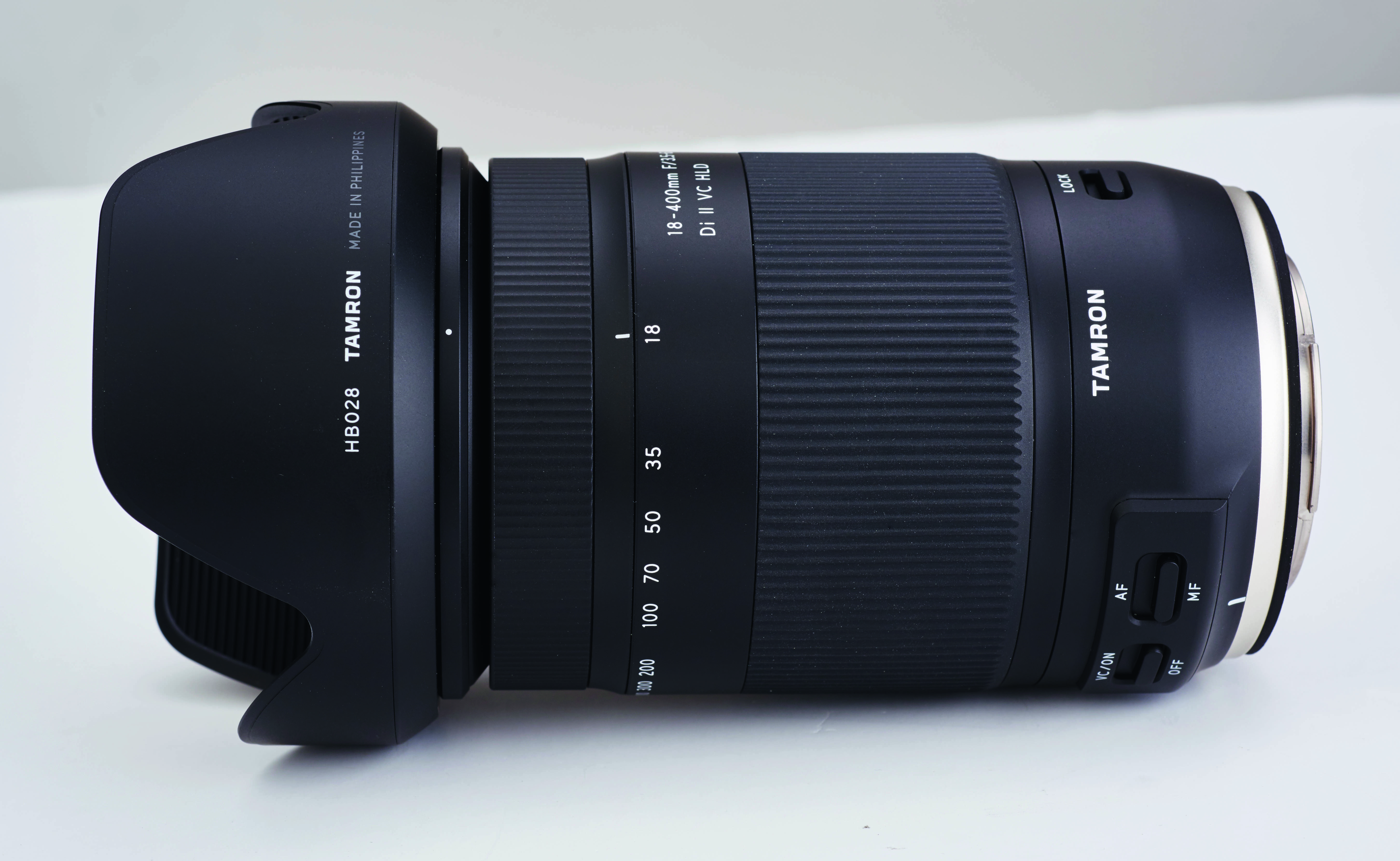Digital Camera World Verdict
This lens is the superzoom of choice if you want maximum telephoto reach. However, Tamron’s 16-300mm has a slightly wider angle of view, is smaller and lighter inweight, and better value for money.
Pros
- +
Good levels of sharpness for a superzoom
- +
Customisation via optional console
- +
Built-in vibration control
Cons
- -
Fringing can be noticeable at 300-400mm
- -
Only available for Canon and Nikon APS-C DSLRs
- -
No focus distance on lens barrel
Why you can trust Digital Camera World
Tamron has a history of pushing the envelope in superzoom lens design.
For sheer zoom range, its 18-250mm, 18-270mm and 16-300mm were all world-beaters when launched, and this new 18-400mm lens follows suit. With a gobsmacking 22.2x zoom range, it combines a wide-angle setting, a super telephoto, and everything in between in the single lens.
The unprecedented 400mm telephoto reach is equivalent to a stonking 600mm in full-frame terms, when the lens is on a 1.5x crop-sensor Nikon like the D3400 or D7500, or a 640mm when on a 1.6x crop-sensor Canon like the EOS 1200D or Rebel T6i.
The Tamron 18-400mm 18-400mm f/3.5-6.3 (Model B082) comes in a surprisingly compact and lightweight package (710g), but even so the new lens is about 30 per cent heavier than Tamron’s 16-300mm superzoom. While you get an extra 100mm of focal length at the long end, you lose 2mm at the short end.
That might not sound like much, but the reduction in wide-angle potential is noticeable, shrinking from 82 degrees to 75 degrees. The optical path includes two moulded glass aspherical elements and one hybrid aspherical element, along with three low-dispersion elements. The combination helps to rein in the physical size, while optimizing image quality in terms of sharpness, contrast and colour fringing.


Autofocus is driven by an HLD (High/Low torque-modulated Drive) motor. It’s very quiet in operation, similar to a ring-type ultrasonic system, yet able to adjust focusing speed for speedy stills performance and smooth transitions in movie capture. A retrograde step, compared with the Tamron 16-300mm lens, is that the focus ring rotates during autofocus and doesn’t enable full-time manual override. There’s also no focus distance scale. At least the ring is sufficiently far forward that its spinning doesn’t impair physical handling of the lens.
Tamron’s proprietary VC (Vibration Compensation) image stabilization is featured, with a rating of 2.5-stop efficiency. That’s rather less than in some of Tamron’s other recent lenses, but still very much worth having.
Tamron 18-400mm: Build & handling
Build quality is good, with a sturdy feel and negligible flexing in the three-part extending barrels. The zoom ring is quite stiff but zoom creep is fairly minimal, even when shooting at near-vertical angles. The overall construction is moisture-resistant with a number of weather seals, including one around the metal mounting plate.
The best camera deals, reviews, product advice, and unmissable photography news, direct to your inbox!

Tamron 18-400mm: Performance
Tamron has succeeded in the considerable technical challenge of maintaining good sharpness throughout a huge zoom range, right up to the ultra-long 400mm focal length. In our lab tests, the lens proved as sharp at its longest setting as the competing Sigma 18-300mm and Tamron 16-300mm lenses, despite having considerable extra reach over both of these.
Typical of superzoom lenses, barrel distortion at the shortest zoom setting is clearly visible, but it’s rather less extreme than the Tamron 16-300mm. Colour fringing is noticeable, especially at long zoom settings where it’s very similar to the Tamron 16-300mm. Overall, the new Tamron’s huge zoom range doesn’t come at the cost of a greater compromise in image quality compared to other superzooms.
Tamron 18-400mm: Lab tests
Sharpness

Sharpness is measured at the centre and edge of the frame and across the aperture range. Levels of sharpness across the frame are good for a superzoom lens
Colour fringing at edge (nearer 0 is better)

Colour fringing is measured at six aperture settings (above). It can become rather noticeable in the 300-400mm sector
Distortion

Distortion is displayed on a scale of negative values (barrel distortion) through zero (zero distortion) and positive values (pincushion distortion). Barrel and pincushion distortions are pretty average for a superzoom
Verdict

This lens is the superzoom of choice if you want maximum telephoto reach – and it performs rather well, considering its massive 22x zoom range. However, Tamron’s 16-300mm has a slightly wider angle of view, is smaller and lighter in weight, and better value for money.
Tamron 18-400mm: Specifications
Full-frame compatible: No
Mount options: Canon EF, Nikon F
Image stabiliser: Yes (2.5 stop)
Minimum focus distance: 0.45m
Field of view: 75 - 4 degrees (diagonal)
Construction: 16 elements in 11 groups
Focus type: Autofocus & manual
Focus limit switch: No
Internal focus: Yes
Filter size: 72mm
Iris blades: 7
Weather seals: Yes
Supplied accessories: Caps, hood
Dimensions (dia x length): 79 x 124mm
Weight: 710g
Read more: Best superzoom lenses for Nikon
Read more: Best superzoom lenses for Canon
The sister print publication to this website, Digital Camera Magazine is Britain's best-selling photography publication – and it can also be purchased outside the United Kingdom as Digital Camera World.
Digital Camera Magazine is packed with more expert advice and more inspirational images than any other title, with the sole aim of helping you become a better photographer. Every issue we also bring you a selection of great gifts which are designed to help you get more from your photography – everything from tips cards and cheat sheets to free software and bookazines.
In addition to inspirational images, interviews, projects, mini tests and tutorials, each issue is packed with news, reviews and comparisons, as well as photographer vs photographer shootouts and head-to-head challenges using the best photo editing software.
The magazine is captained by Editor Niall Hampton.


